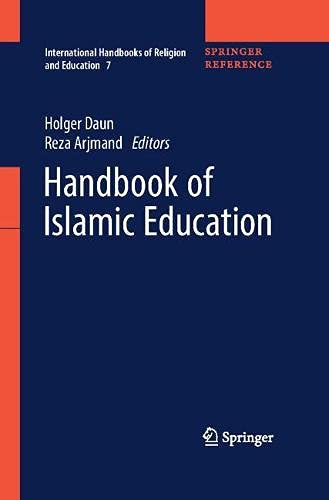آموزش اسلامی در چین
Islamic Education in China
- جاکولین آرمیخو
- Jacqueline Armijo
- چکیده
Although Muslims have resided in China since the earliest days of Islam (primarily as traders along the southeast coast) it was not until the Mongol Yuan Dynasty (1261–1364) that hundreds of thousands of Muslims from Central Asia and the Middle East settled permanently in China, creating communities in every region of the country. Today, most of the more than 20 million Muslims living in China are descended from these thirteenth century settlers. Despite their relative isolation from the Islamic heartland, over the centuries Muslim communities were able to sustain their religious identity and knowledge. However, in the mid-sixteenth century in an effort to make both Islamic texts more accessible to the growing number of Muslims who were no longer able to read texts in Arabic or Persian, as well as establish a more formal tradition of Islamic education, a group of Chinese Muslim scholars developed the Han Kitab and Jingtang Jiaoyu. The Hān Kitāb is a collection of important Islamic texts translated into Chinese and Jingtang Jiaoyu is a term meaning “Education in the Hall of the Classics,” that refers to the form of Islamic education that built on traditional Chinese educational methods but focused on the study of Islam. These texts and methods of education proved highly effective in fostering a deeper understanding of Islam, and before long experienced teachers were traveling to different regions of China to set up schools. It was also during this time that the tradition of the traveling scholar developed, as well as that of students traveling to different regions of China to further their studies under well-known ‘ulamā’. Islamic education in China today incorporates both a continuation of the traditions started centuries ago, as well as influences from Western style education, and government controlled Islamic education. In addition, over the past 20 years as Islamic education has flourished in China, thousands of advanced students have chosen to continue their education abroad at international centers of Islamic learning in Egypt, Syria, Pakistan, Saudi Arabia, Iran, and Malaysia. (For additional information on the influence of foreign study on Islamic education in China see, Armijo 2008.) In addition to the issues addressed above, this chapter will also focus on the active role played by women in Islamic education, the role of the state in both promoting and restricting different forms of Islamic education in different regions of China, and the recent trend to link .vocational training with Islamic education, as well as other recent developments
- مشخصات منبعشناختی
.Armijo, Jacqueline. “Islamic education in China.” Handbook of Islamic Education, Edited by Holger Daun and Arjmand Reza. Heidelberg, Springer (2018): 798-809
- ملاحظات
مولف در این مقاله که در «دستنامه آموزش اسلامی» منتشر شده، درباره سابقه حضور مسلمانان در چین مطالبی را بیان میکند و نظام آموزش دینی مسلمانان چین در تاریخ را بررسی میکند. از نظر او نظام آموزش اسلامی در چین امروز از یک سو تداوم تاریخی آموزشها به صورت سنتی و از سوی دیگر تلاشهای نسلهای جدید برای سفر به خارج چین و کسب آموزشهای اسلامی در خاورمیانه است. همچنین به نقش خاص کشور ترکیه در تاثیرگذاری بر آموزش اسلام تاکید میکند. او در این مقاله بر مسئله زنان و نقش آنان در نظام آموزش اسلامی در این کشور تمرکز کرده و نشان میدهد که دولت چین همزمان نقش مروج و محدود کننده آموزشهای اسلامی در این کشور را ایفا میکند.
مقاله حاضر به خوبی مسئله آموزش اسلام در چین را با یک رویکرد کلی گرا بیان میکند. از انجا که درباره آموزش اسلام در چین، آثار زیادی در دست نیست، باید این مقاله را قدر دانست. از سوی دیگر از آنجا که این مقاله بر مسئله زنان نیز تمرکز دارد، در صورت که زمانی خواسته باشیم تا مجموعه مقالاتی درباره نقش زنان در آموزش اسلام داشته باشیم، این مقاله حتما قابل استفاده است.
- درباره نگارنده
جاکولین آرمیخو: استاد دانشگاه آسیایی زنان، بنگلادش
- کشور مورد بحث در مقاله
- مورد تایید جهت ترجمه و انتشار
- اطلس جامع شیعی /
- کتابخانه /
- مقاله /
- آموزش اسلامی در چین
